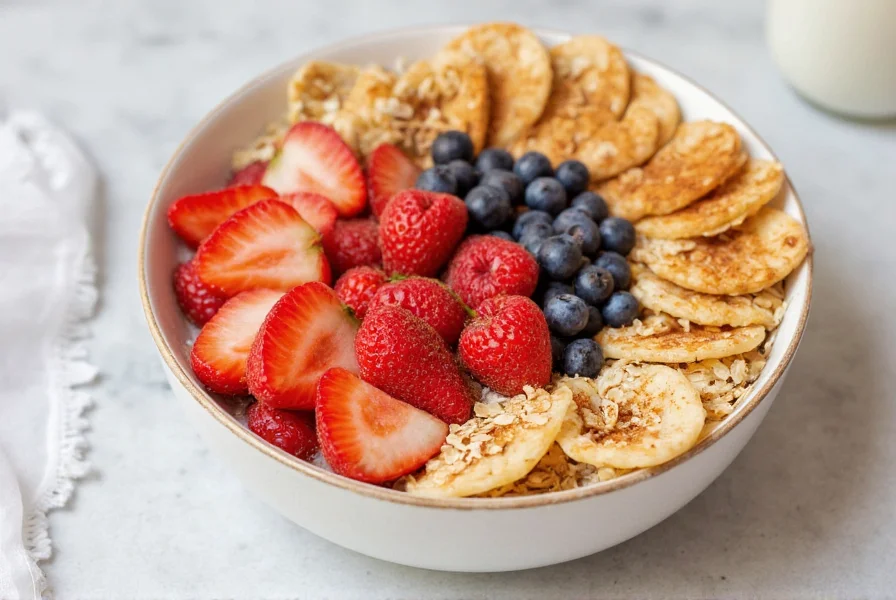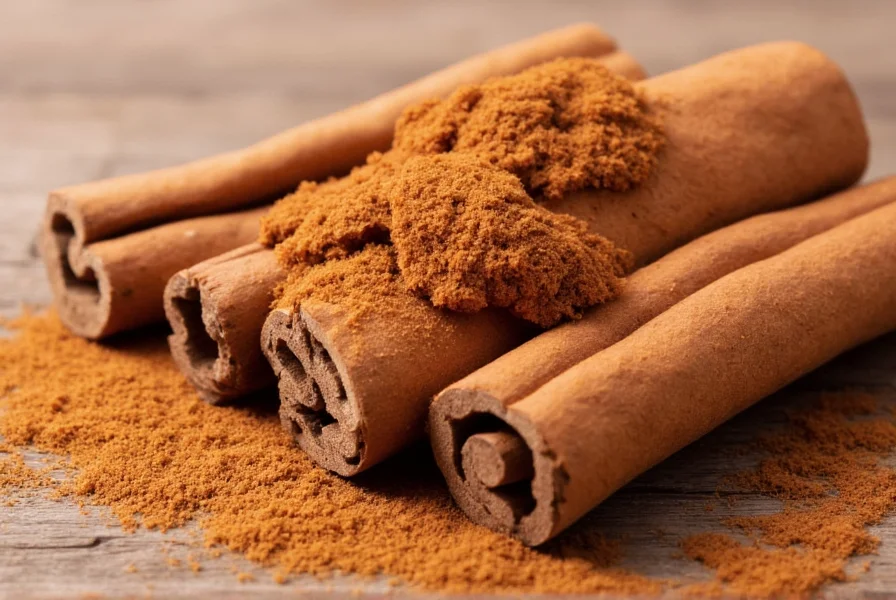Cinnamon has been prized for thousands of years, not just for its warm, sweet flavor but for its remarkable nutritional profile. This ancient spice, derived from the inner bark of Cinnamomum tree species, has transitioned from royal courts to everyday pantries while maintaining its status as a nutritional powerhouse. Modern research continues to validate many of the traditional uses of this versatile spice, revealing its complex biochemical composition and potential health benefits.
Nutritional Composition of Cinnamon
Understanding the food value of cinnamon requires examining its detailed nutritional breakdown. Per 100 grams, cinnamon contains approximately 247 calories, though typical consumption is measured in teaspoons rather than larger quantities. The nutritional benefits of cinnamon become particularly impressive when considering standard serving sizes.
| Nutrient | Per Teaspoon (2.6g) | % Daily Value |
|---|---|---|
| Calories | 6.4 | 0.3% |
| Total Fat | 0.06g | 0.1% |
| Carbohydrates | 2.1g | 0.8% |
| Dietary Fiber | 0.5g | 1.8% |
| Sugar | 0.03g | 0.1% |
| Protein | 0.1g | 0.2% |
| Manganese | 0.3mg | 16% |
| Calcium | 26.1mg | 2.6% |
| Iron | 0.2mg | 1.5% |
The standout nutrient in cinnamon is manganese, with just one teaspoon providing over 15% of the recommended daily intake. This essential mineral plays crucial roles in bone health, metabolism, and antioxidant function. While cinnamon contains modest amounts of other vitamins and minerals, its true nutritional significance lies in its rich array of bioactive compounds.
Powerful Bioactive Compounds in Cinnamon
The cinnamon health properties primarily stem from its high concentration of polyphenol antioxidants, including cinnamaldehyde, cinnamic acid, and cinnamate. These compounds give cinnamon its distinctive flavor and aroma while providing substantial health benefits.
Research published in the Oxidative Medicine and Cellular Longevity journal indicates that cinnamon ranks among the most antioxidant-rich spices, with an ORAC (Oxygen Radical Absorbance Capacity) value of 267,536 μmol TE per 100g. This exceptional cinnamon antioxidant content helps combat oxidative stress and may reduce the risk of chronic diseases.

Health Benefits Supported by Scientific Research
Multiple studies have investigated the potential health effects of cinnamon consumption. One of the most well-documented benefits relates to cinnamon blood sugar regulation. A meta-analysis in the Journal of Medicinal Food found that cinnamon supplementation significantly reduced fasting blood glucose levels in people with type 2 diabetes.
The cinnamon anti-inflammatory effects also show promise. Research suggests that cinnamaldehyde may inhibit inflammatory pathways in the body, potentially benefiting conditions associated with chronic inflammation. Additionally, preliminary studies indicate cinnamon may support cardiovascular health by improving cholesterol profiles and reducing blood pressure.
Ceylon vs Cassia: Understanding the Differences
When evaluating the food value of cinnamon, it's essential to distinguish between the two primary varieties:
- Ceylon cinnamon (Cinnamomum verum): Often called "true cinnamon," this variety is lighter in color, more delicate in flavor, and contains significantly lower levels of coumarin (a compound that can be harmful in large amounts)
- Cassia cinnamon (Cinnamomum cassia): The more common and less expensive variety, with a stronger flavor but higher coumarin content
For regular consumption, especially in larger quantities, Ceylon cinnamon represents a safer option due to its minimal coumarin content. The European Food Safety Authority recommends limiting coumarin intake to 0.1 mg per kg of body weight daily, making Ceylon preferable for therapeutic use.
Practical Applications in Daily Nutrition
Incorporating cinnamon into your diet offers a simple way to enhance both flavor and nutrition. The how much cinnamon per day is healthy question depends on the variety used. For Cassia cinnamon, limiting intake to 1-2 teaspoons daily is advisable, while Ceylon can be consumed more liberally.
Practical ways to enjoy cinnamon's nutritional benefits of cinnamon include:
- Adding to morning oatmeal or yogurt
- Stirring into coffee or tea
- Using in savory dishes like curries and stews
- Creating homemade spice blends for baking
- Adding to smoothies for natural sweetness

Safety Considerations and Potential Interactions
While cinnamon is generally safe when consumed in culinary amounts, certain considerations apply. The coumarin content in Cassia cinnamon may pose risks for individuals with liver conditions or those taking blood-thinning medications. Pregnant women should consult healthcare providers about appropriate consumption levels.
Some people may experience oral allergy syndrome or skin irritation from handling cinnamon. As with any dietary change, moderation is key, and therapeutic use for specific health conditions should be discussed with a healthcare professional.
Conclusion: Maximizing Cinnamon's Nutritional Potential
The food value of cinnamon extends far beyond its role as a simple flavoring agent. With its impressive antioxidant profile, potential blood sugar regulation properties, and anti-inflammatory effects, this ancient spice offers meaningful nutritional benefits when incorporated thoughtfully into a balanced diet. Choosing Ceylon cinnamon for regular consumption and understanding appropriate serving sizes allows you to safely enjoy cinnamon's health-promoting properties as part of a wholesome eating pattern.
Frequently Asked Questions
What are the key nutritional components of cinnamon?
Cinnamon's primary nutritional components include manganese (providing 16% of daily value per teaspoon), dietary fiber, and powerful antioxidants like polyphenols. It also contains smaller amounts of calcium, iron, and other minerals. The bioactive compounds cinnamaldehyde, cinnamic acid, and cinnamate contribute significantly to its health properties.
How does cinnamon affect blood sugar levels?
Research shows cinnamon may help regulate blood sugar by improving insulin sensitivity and slowing carbohydrate breakdown in the digestive tract. Multiple studies, including a meta-analysis in the Journal of Medicinal Food, have found that cinnamon supplementation significantly reduces fasting blood glucose levels, particularly in people with type 2 diabetes.
What's the difference between Ceylon and Cassia cinnamon?
Ceylon cinnamon (true cinnamon) is lighter in color, has a more delicate flavor, and contains significantly lower levels of coumarin. Cassia cinnamon is darker, stronger in flavor, and more commonly available but contains higher coumarin levels. For regular consumption, especially in larger amounts, Ceylon is generally considered safer due to its minimal coumarin content.
How much cinnamon is safe to consume daily?
For Cassia cinnamon, limiting intake to 1-2 teaspoons (2-4 grams) daily is advisable due to its higher coumarin content. Ceylon cinnamon can be consumed more liberally, up to 1-2 tablespoons (5-10 grams) daily, as it contains minimal coumarin. Individuals with liver conditions or those taking blood-thinning medications should consult healthcare providers about appropriate consumption levels.











 浙公网安备
33010002000092号
浙公网安备
33010002000092号 浙B2-20120091-4
浙B2-20120091-4